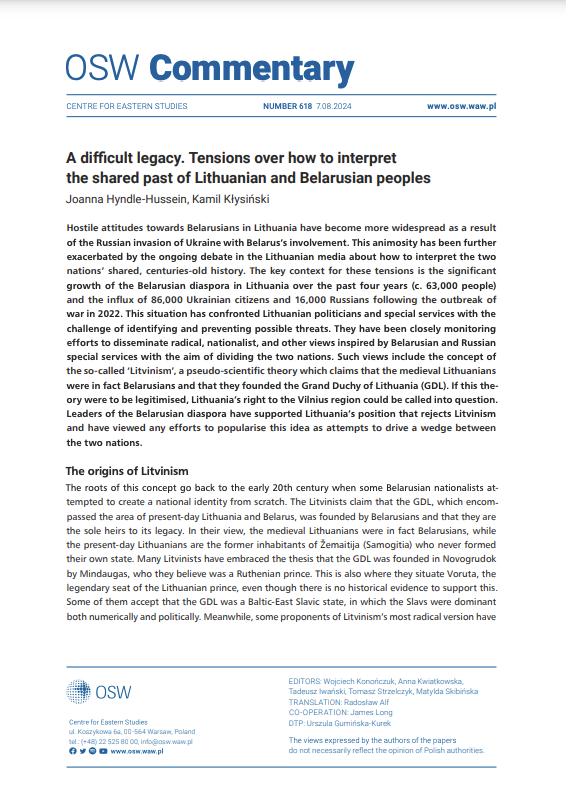A difficult legacy. Tensions over how to interpret the shared past of Lithuanian and Belarusian peoples
A difficult legacy. Tensions over how to interpret the shared past of Lithuanian and Belarusian peoples
Author(s): Joanna Hyndle-Hussein, Kamil Kłysiński
Subject(s): Politics, Geopolitics
Published by: OSW Ośrodek Studiów Wschodnich im. Marka Karpia
Keywords: Belarus; Lithuania
Summary/Abstract: Hostile attitudes towards Belarusians in Lithuania have become more widespread as a result of the Russian invasion of Ukraine with Belarus’s involvement. This animosity has been further exacerbated by the ongoing debate in the Lithuanian media about how to interpret the two nations’ shared, centuries-old history. The key context for these tensions is the significant growth of the Belarusian diaspora in Lithuania over the past four years (c. 63,000 people) and the influx of 86,000 Ukrainian citizens and 16,000 Russians following the outbreak of war in 2022. This situation has confronted Lithuanian politicians and special services with the challenge of identifying and preventing possible threats. They have been closely monitoring efforts to disseminate radical, nationalist, and other views inspired by Belarusian and Russian special services with the aim of dividing the two nations. Such views include the concept of the so-called ‘Litvinism’, a pseudo-scientific theory which claims that the medieval Lithuanians were in fact Belarusians and that they founded the Grand Duchy of Lithuania (GDL). If this theory were to be legitimised, Lithuania’s right to the Vilnius region could be called into question. Leaders of the Belarusian diaspora have supported Lithuania’s position that rejects Litvinism and have viewed any efforts to popularise this idea as attempts to drive a wedge between the two nations.
Series: OSW Commentary
- Page Count: 6
- Publication Year: 2024
- Language: English
- Content File-PDF

